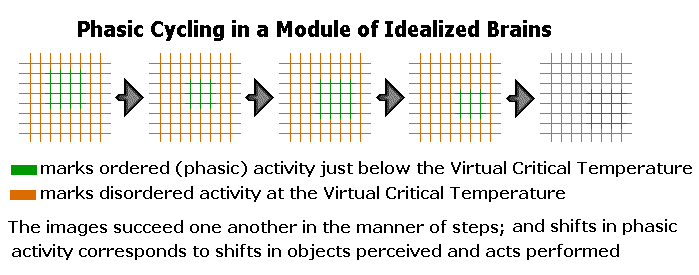Studies by physicsists of thermodynamic critical point phenomena suggest a Thermal Model of brains. The idealized conceptual unit in the Thermal Model is a distinct and compact body, called a Neuronal Group, made up of a large number of identical idealized units (Neurons) interacting through a uniform "nearest-neighbor" activation. The chief operating principle is Phasic Cycling where Virtual Energy in the body is alternatively stored (heating) and dissipated (cooling): at maximum storage, activity in the Neuronal Group is disordered and the Neuronal Group is in the Neuronal Critical State; upon dissipation, an ordered phase appears that may be one among several phases in an ordered phase structure and such emergence is interpreted psychologically as experiences of objects, including perceptions and purposeful intentions, and of acts, including muscular acts.
The principle of Phasic Cycling is embodied in conceptual devices - Structural Engines - that operate in a cyclical fashion, pumping pulses of Virtual Energy through Assemblies of Neuronal Groups that cycle energy flows through cooling and heating waves and thus produce phases, corresponding psychologically to production of experiences of objects and acts. Development of Structural Engines imitates development of Heat Engines that occurred the nineteenth century and that is the basis of the modern concept of energy. The Idealized basic design can be made subject to various modifications and applications that yield many and various Structural Engines suggestive of diverse forms of personal experience.
